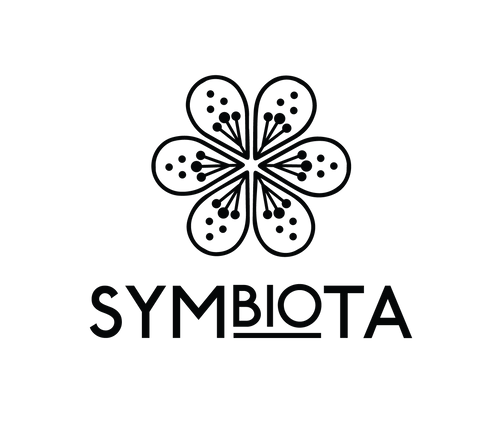Most fermented drinks follow the same principals, these include water kefir, jun kombucha and ginger beer.
Making your own kombucha is a fun and rewarding process. Most of all, it allows you to control what you put into your kombucha and how much fizz you want compared to store bought kombuchas which often have many unnecessary ingredients.
Making fizzy kombucha
To make your own kombucha, all you need is black, green or white tea, organic sugar, good quality water, a suitable brewing vessel (usually glass or food-grade stainless steel) and a mother or SCOBY which is a symbiotic colony of bacteria and yeasts for fermentation and carbonating your kombucha.
While natural fermentation produces carbon dioxide naturally, there are some extra steps one can take to specifically create a super fizzy kombucha by force carbonating it. If this is not what you want, then you can also produce a ferment that is flat and less fizzy.
The simplest way to avoid a fizzy kombucha, is to not put it through a second stage ferment.
Producing a reliably fizzy ferment requires the correct fermentation process for both 1st and 2nd stage ferments, and well sealing bottles. Usually, the brown flip top bottles bought from brewing stores work the best as they seal so well.
First & Second Stage of Fermentation
First stage of fermentation
During the first stage of fermentation, the yeasts and bacteria get to work and eat the sugar present in the sweetened tea. By the end of fermentation, you are left with a far less sweetened and fermented tea known as kombucha (the longer you leave it to ferment, the less sugar there will be in it. So you can decide how sweet you like it). Once the fermented kombucha is slightly sweeter than how you’d like to drink it, it is at this stage, where you drain your fermented liquid off and can flavour it to your liking; often by adding fruit juice and other desirable ingredients. Most people add fruit, herbs and spices at this point. The added fruits aid the natural carbonation process by introducing sugar for the microorganisms to metabolize, and releasing carbon dioxide as a by-product, making your kombucha fizzier.
Second stage of fermentation
Kombucha becomes carbonated during secondary fermentation. For those that don’t know what secondary fermentation is, it is when you drain off your fermented kombucha (reserving the SCOBY and starter liquid for the next brew), flavor your kombucha, bottle it, and leave it to ferment for a little longer.
The sugar in the flavoring reactivates the bacteria and releases gas. The gas contained in the bottle then builds pressure so to a point that when you open the bottle, it’ll release a sharp hiss. During second stage ferment, it is important to leave your kombucha bottles out at room temperature for a further 1-3 days so the microorganisms can get to work, metabolizing the sugar, making it fizzier. It is often useful to burp your bottle (releasing some of the pressure by opening the bottles slightly) daily so that you don’t land up with a fizzy explosion.
Fermenting your kombucha at a warmer temperature during the first stage ferment will also help contribute to a fizzier second stage ferment. Kombucha can generally ferment at room temperature or between 16℃ and 30℃, however the optimum temperature to ferment kombucha at is between 24℃ and 26℃ if you are aiming for fizz.
Tips on how to make your Kombucha Fizzy
- In order to get a really fizzy kombucha, ensure you get the right ingredients, time, bottles, temperature and the methods below.
- Follow the recommendations for both the 1st stage ferment and the 2nd stage ferment.
- Ferment at warmer temperatures, with a sweet spot being around 24 degrees celcius.
- Organic ingredients generally produce the best fizz.
- You can use flavoured tea's in the second stage ferments, but often these have no sugar for the microorganisms to feed off and produce a fizzy ferment.
- Avoid fruits, purees or flavourings that have preservatives or additives.
- Use fresh juice to flavour your kombucha - fresh juice is filled with live enzymes, nutrients, and natural sugar. This nourishing combo will literally make your kombucha erupt with carbonation. This is why you need strong bottles. During summer, you’ll only need 1-3 days (and about 1 week during cold periods) to acquire a fizzy kombucha if you use squeezed or fresh pressed juice.
- OR flavor it with fruit puree - similarly, fruit puree (e.g blended mango) puts the probiotic bacteria in a frenzy. They speedily eat it up and produce a highly carbonated drink.
- Add sugar - bacteria needs the sugar to release gas and make it carbonated. The same applies when you’re using flavorings that don’t contain sugar in them, like herbs, tea or spices.
- Do not filter out the yeast - that slimy, brown stuff floating around your kombucha is yeast. The yeast contributes to a fizzy kombucha so leave it in there till you’re ready to drink it.
- Use growlers or flip-top bottles - if your kombucha isn’t getting fizzy, the fault may be from the bottle. Use a strong flip-top bottle or a beer growler. Doing this prevents gas from escaping and prevents the bottle from exploding.
Why is my kombucha not fizzy?
If you find your kombucha is not fizzy, give it time. There are multiple variables to play with to get it to the perfect fizz. Temperature, water, sugar, first stage ferment, second stage ferment and so forth. It is best to adjust one variable at a time, as each variable may take up to 3-4 rounds of fermentation to indicate whether it is making a difference or not. Be patient, fermentation is an art and sometimes requires a little effort, and trial and error to find the sweet spot.

Back to Blog